The revolution in Iran sent Pentagon planners and the CIA scrambling to calculate its impact on allies in the region. Saudi Arabia, with its small population, and its oil producing region, dominated by the Shias, was the most vulnerable. But others saw an opportunity, that it could inspire the Soviet Union's Muslim republics. The twin Islamic movements in Iran and Afghanistan persuaded the Reagan team to pursue the Islam in Asia theme aggressively. Until Afghanistan, Islam was a bulwark, now it was a sword against Soviet expansion. It signaled a significant escalation in the policy of cooperating with the Brothers and other elements of political Islam. Afghan jihad empowered political Islam's most radical fringe. It also created a battle hardened cadre of skilled guerilla fighters. It vastly strengthened the international bonds tying Islamists all over the world. In 1980s Islamists seized control of Afghanistan and the Sudan, and held power in Saudi Arabia and Pakistan, and threatened Egypt and Algeria. Foundation for Al-Qaida was laid at the time. The Afghan Jihad energized what had till the 1980s, been a neo-conservative pipe dream of military occupation of the oil producing Persian Gulf. There is a direct link between the wars in Afghanistan and Iraq and the current US military presence in oil rich Central Asia. It began in 1980s, when the Jihadis took US, Chinese, Israeli weapons to fight the Red army and continued to 1990s, when the US cooperated with the Taliban. 9/11 facilitated further massive US penetration of the newly independent Muslim Central Asian countries. It led to new military relationship with Egypt, Saudi Arabia and Pakistan, and creation of the Rapid Deployment force, and the establishment of the Central US command. In January 1980 Carter had proclaimed what came to be called " the Carter Doctrine" which was a forceful restatement of US claims to the Persian gulf by Roosevelt (1943), and Eisenhower (1957, that "…any attempt by any outside power to gain control of the Persian Gulf…regarded …an assault on…vital interests of the US" At the time, it was mostly bravado. The US did not even have token forces in the Gulf. Soviet Union's reluctant move into Afghanistan was a last ditch defensive action against the US and Pakistan inspired Afghan Islamist provocateur threat against it. There had been talk of US invasion of Saudi Arabia and occupation of its oil fields since mid-1970s oil embargo imposed by OPEC in 1973. In 1975, Kissinger wrote an anonymous article using the pseudonym Miles Ignotus in Harper's, headlined, "Seizing Arab oil( Saudi Arabia pledged investment of all its oil income in NY, so was not attacked). Kissinger summoned a CIA executive heading out to the Middle East, "We have to teach Saudi Arabia a lesson. Pick one of those sheikhdoms…and overthrow the government…". Carter ordered creation of RDF, Reagan would expand it into the Central command. In the 1970s several factors combined to give a stronger hand to those who had for years, sought to play the Islam card against Moscow. Muslim population of Soviet Central Asia was growing far more rapidly than the population of other soviet republics. The revolution in Iran catapulted militant Islam to the forefront. The pro-soviet regime in Afghanistan seemed particularly vulnerable. In 1960s, Brzezinski joined the ranks of those calling for greater support of Central Asian Muslims. He was a militant ant-communist. Gates, the then CIA director wrote, "B… was deeply interested in exploiting soviet nationalities problem. B and Co were the acolytes of Alexandre Bennigen, a European academic with aristocratic Russian roots. He initially went to Paris, then to the University of Chicago, and wrote many books and articles on Islam in Central Asia which fostered a movement among scholars and officials who believed in the viability of the Islamic card. In The Islamic Threat to The Soviet State, he claimed that the movement harked back to "armed religious resistance…began in the late 18th century…spearheaded by… Sufi brotherhoods (tareeqa), and opposed Russian imperial presence. The most significant society, according to him was the secret Naqshbandiya, a Freemason style fraternity closely tied to turkey, "…have a long tradition of "Holy War" against Russians. US effort to encourage political Islam to revolt…would be"…comparable to…Islamic Revolution in Iran. By toppling the Shah, Khomeini had rewritten the rules. After the soviet intrusion into Afghanistan in December 1979, Zalmay Khalilzad, a neo-conservative analyst and RAND strategist, and future US diplomat wrote a paper. " the Khomeini regime also poses risks to the Soviets…has encouraged similar movements in Iraq…might even affect Soviet Muslim. Referring to Shamil, the 19th century Muslim resistance leader, who had opposed Russian expansion in Asia, Henze, a former CIA station chief in turkey wrote, "…be extremely difficult for the Soviet Union… to continue their pro-Arab "anti-colonial policy"…without running the risk of provoking …Central Asian peoples…". The trio of Bennigsen, B and Henze joined forces with Richard Pipes, who wrote "The entire…Central Asia…may well tend to move…in the direction of independent statehood…". Under Reagan, Pipes assumed chairmanship of the nationalities working Group. No such anti-soviet Muslim revolt emerged in Central Asia, but America's support did aid extremist Islamist groups in Chechnya, Uzbekistan and other countries of the region. Long before 1979, in fact America's connection to the Brotherhood-linked Islamists began in 1950s, and US support for Islamist political right began in 1973. The CIA sent a team through the offices of Asia Foundation, which was a CIA front organization in the 1950-50s. the organization helped the Islamic Research Institute in Lahore, and helped it publish the encyclopedia of Islam. The students were target number one. The Foundation established relations with the Mujaddidi family in Afghanistan. The version of Islam that prevailed in Afghanistan, until the 1960s, was not political Islam. But under the influence of the Brothers and Pakistan's Jamaat e Islami, Afghan Islam became politicized and militantly anti-communist. The origin. According to Oliver Roy, a French Orientalist, began with a semi-secret clique called "the professors" who had studied at Al-Azhar, led by Professor Gholam Muhammad Niyazi of the theology faculty of Kabul university and a major CIA beneficiary through the Asia Foundation. In 1972, according to declassified US embassy documents, that a member of the Muslim youth led by Niyazi, met a US official several times and described his activities, including the murder of four leftists, and asked funds to buy a printing press. In 1958, the movement coalesced and clashed with Muhammad Daoud, the king's cousin and future president. It called itself the Islamic Society. By mid-1960s the Society was following in the foot steps of its Arab and Pakistani counterparts, and started assaulting left wing and communist students. Among the leaders of the Islamist movement in Afghanistan were Abdul Rauf Sayaf affliliated with the Brothers, and Burhanuddin Rabbani and Gulbuddin Hikmatyar. In 1973, Daoud, with the help of communists, toppled the king and established a republic. The CIA, and Pakistan, first under Bhutto, later under Zia, and the Shah of Iran, made zealous efforts to undermine the new Afghan government. Later the government admitted its role, with the full complicity of CIA, "PM Benazir's special assistant Nasirullah Babar…in a press interview in April 1989…the US had been financing Afghan dissidents since 1973…had taken… Hekmatyar under its wing. Diego Cordovez and Selig Harrison, drawing on the released Soviet archives, " …Beginning in 1974, the Shah launched a determined effort to draw Kabul into…security sphere embracing India, Pakistan and Persian Gulf states…the US actively encouraged…" (29). "SAVAK and CIA worked hand in hand with Afghan fundamentalists who were linked with the Brothers and the Muslim world League…while Pakistan's ISI helped coordinate raids on Afghanistan". Though in 1975, Afghan's Islamists felt they had enough power to launch a rebellion against Daoud, "What went almost unnoticed in the excitement of Pakistani involvement…was that Daoud was putting down a manifestation of "International" Islam…and it was the Brothers who, as the larger group, …entered an agreement with Pakistan's ISI chief General Jillani. Daoud, under pressure from the US, Iran and Pakistan began to tilt to the right, met the shah and Bhutto, and started installing right wing officers in key posts. His power base was reduced to a small ultraconservative clique, and according to Cordovez and Harrison, the real power behind the scene, was wielded by SAVAK, the Brotherhood, and the World Muslim league. In April 1978, Noor Mohammad Taraki, staged a coup, and the Islamists supported by ISI, carried out a Pol Pot style campaign of terrorism, assassinating hundreds of teachers and civil servants. The US was well aware of the terrorism. Pakistan's ties with the Islamist terrorists grew stronger. Zia established a regime based on 'Islamic law', and promoted Maududi's Jamaat e Islami. Bzezinski gave an interview to La Nouvel Observateur in 1998, "…CIA aid to Mujahidin started…after the Soviet army invaded Iran on December, 24 1980…but the reality…is completely otherwise…it was July 3, 1979, that…Carter signed the first directive for secret aid. The Afghan holy war began not in 1980, after the soviet troops crossed the border…, but in 1978, when the Islamists began a…uprising with ISI support. During the time the US maintained relations with the Iranian government of Barzagan,…providing intelligence about the USSR and Iraq…, till the seizure of the US embassy in December, 1979. According to Gates, the CIA had…Afghanistan…to replace listening posts in Iran. The CIA contacted Saudi Arabia and Pakistan about providing aid to Afghan rebels. In the interview mentioned above, Brzezinski had admitted that his intention had all along been to provoke a Soviet invasion of Afghanistan…Now he told Carter in 1979, "We can give the USSR its Vietnam,,,". Steve Coll wrote in his Ghost Wars, Zia sought and obtained political control over the CIA's weapons and money…". Saudi Arabia agreed to match US contributions…dollar for dollar. Saudi aid came with strings. The growth of Islamism in Pakistan was directly tied to Saudi aid to Islamabad. For Pakistan, it was Hekmetyar. By all accounts, he was responsible for throwing acid in the faces of Afghan women who failed to cover themselves properly. Hekmetyar's specialty was skinning prisoners alive. Sibghatullah Mujaddidi called him a true monster. But representative Charles Wilson, a Texas Republican who was the leading congressional advocate for the Afghan jihad, approvingly noted that Zia was "totally committed to Hekmetyar, because Zia saw the world as a conflict between Muslims and Hindus, and he thought he could count on Hekmetyar to work for a pan-Islamic entity that could stand up to India". As the war evolved, Abdul Rasul Sayaf, the Afghan Muslim brotherhood leader and Hekmetyar as the Afghan leaders closest to the legions pf foreign, mostly Arab fighters who flocked to Afghanistan to join the jihad. By the end of 1980s, it would be the so called "Arab Afghans" who would graduate to become leaders of the militant and terrorist Islamists from Egypt to Chechnya. Both Sayaf and Hekmetyar were close to Osama bin Laden, whose rise to prominence began as early as 1979-80, when he enlisted in the Afghan jihad. "Once in Pakistani exile, Hekmetyar gathered around him the most radical, anti-western Islamists…including bin laden".
Dr. S. Akhtar Ehtisham
(607) 776-3336
P.O. Box 469,
Bath NY 14810
USA
Blog syedehtisham.blogspot.com
All religions try to take over the establishment and if they fail, they collaborate with it, be it feudal or capitalist. | 

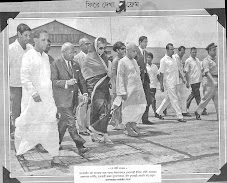



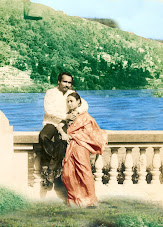






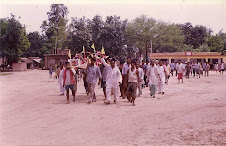

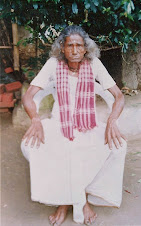
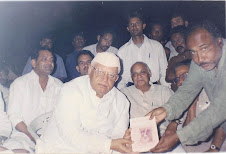
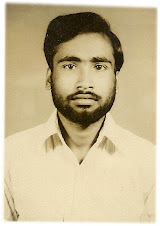



No comments:
Post a Comment